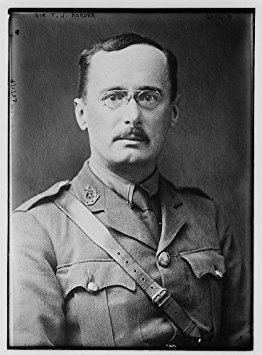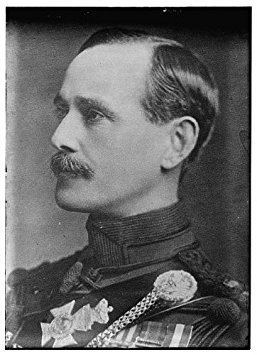Allegiance United Kingdom Name Edward Northey | Rank Major-General Years of service 1888 to 1926 Died December 1953 | |
 | ||
Commands Nyasa-Rhodesia Field Force43rd (Wessex) Infantry Division Battles and wars Second Boer War, World War I, Western Front, East African Campaign | ||
Major General Sir Edward Northey GCMG, CB (May 1868 – December 1953) was a senior British Army officer of the First World War who commanded a brigade on the Western Front until wounded in 1915. Returning to service in 1916, Northey took command of a colonial force in Nyasaland in the East African Campaign, later becoming Governor of Kenya. He later served as a general of Territorial forces and retired in 1926.
Contents
- Birth and early career
- First World War
- Governor of the British East Africa Protectorate
- Late career
- References

Birth and early career
Edward Northey was born in 1868 and educated at Eton College and the Royal Military College, Sandhurst, being commissioned into the King's Royal Rifle Corps in 1888. He served in expeditions to Hazara and the Miranzai Valley in 1891 and one to Isazai the following year. In 1899, Northey took part in the Second Boer War, remaining in the theatre until 1902.
First World War
When the First World War broke out in 1914, Northey was a lieutenant colonel in the King's Royal Rifle Corps and served with the regiment on the Western Front during the first year of the war. In March 1915, Northey was promoted to brigadier-general and took over the 15th Infantry Brigade but was seriously wounded during the Second Battle of Ypres. The date is unclear, but Northey was reportedly surveying the site of a new communication trench when he was struck in the thigh by shrapnel.
Returning to the army in 1916 after recovering from his wound, Northey was posted to Nyasaland in command of the Nyasa-Rhodesia Field Force, operating against Lettow-Vorbeck's indigenous and German forces in the East African Campaign. Northey was made a Companion of the Order of the Bath in 1917 and was knighted in the Order of St Michael and St George in 1918 for his war service, the same year he was promoted to major-general. He later advanced to Knight Grand Cross of the Order of St Michael and St George.
Governor of the British East Africa Protectorate
At the war's end Northey was appointed Governor of the British East Africa Protectorate, which became known as Kenya in 1920. On 16 October 1919 The Times newspaper reported that Sir Edward Northey had met with an accident, while playing polo, which required the removal of his right eye. The accident occurred in British East Africa. In 1922, Northey became High Commissioner of Zanzibar, returning to Britain in 1924 to return to military service.
In 1921, he promulgated the Northey circular, which forced African inhabitants to work for the white planters, almost as for penal labour.
Late career
On his return, Northey was placed in command of the 43rd (Wessex) Infantry Division, a Territorial Army formation. This responsibility was shared with command of the South West Area of Britain, and Northey performed well at both duties until his retirement from military service in 1926. Northey died in 1953 after a peaceful retirement.
